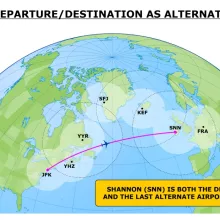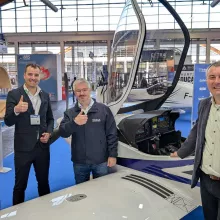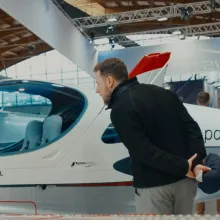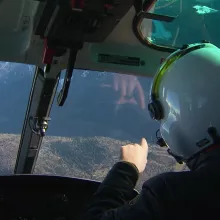Kudos to Wendell for his quest. Indeed, the poor safety record of GA compared to CAT should not be considered as given.
IMHO this evil has two roots. One is based in training and the other in the equipment we operate. Both are subject to regulation by EASA and both seem to be regulated commerce-centric rather than safety-centric.
In regard to training, GA means essentially single pilot no-safety nets non-routine operations. For-profit training organizations, "anecdotally" use the cheapest equipment and offset the risks as much as allowed. The tragedy is that what is allowed is aligned with CAT, where multi crew, safety nets, routine operations is the norm thinking that this rises the bar, while in fact it lowers the bar.
In regard to equipment, I can't think of any incentive for OEMs to add risk reducing features beyond the minimum requirements, if this could bring the cost up, or the performance down. Also no incentive to add features which could facilitate single pilot-oriented training like for example in the military.
In conclusion, shifting more responsibility to pilots as suggested in intro, does not seem right to me. I am sure none of the GA victims wanted to die and they all had EASA licenses. This begs the question, whether an EASA license is adequate proof of ability to weigh own capacity versus risks?
Join your community
Join a community to be part of the discussion.
André de Chauvigny de Blot created a topic in Air Operations
John FRANKLIN posted in Rotorcraft
Another excellent article from the team at Pilot's Who Ask Why - this time on Birdstrikes.
https://pilotswhoaskwhy.com/2024/05/05/the-threats-of-bird-strikes-and-…
Alexander Marinosyan commented on John FRANKLIN's topic in General Aviation
John FRANKLIN created a topic in General Aviation
John FRANKLIN created a topic in General Aviation
Andreas Bjoerklund posted in General Aviation
In UK, Australian and New Zealand portable ADS-B IN/OUT appliances like the uAvionix SkyEcho are approved for use (UK CAA CAP 1391 and Australia CASA Civil Aviation Order 20.18 Amendment). What is EASAs standpoint on the topic? Is EASA working on a similar approval for the the EU?
Michel MASSON created a topic in Rotorcraft
Michel MASSON created a topic in General Aviation
Michel MASSON created a topic in General Aviation
Vasileios Papageorgiou created a topic in Cybersecurity
Michel MASSON created a topic in Rotorcraft
Michel MASSON created a topic in Rotorcraft
Marion Choudet commented on Vasileios Papageorgiou's topic in Cybersecurity
Many thanks for this document which brings clarification for both competent authorities and organizations on the deliverables needed to be compliant on the applicability date. Still I have a question of consistency regarding a particular point. The expectation is for organizations to demonstrate we are at the "present & suitable" level. On page 7, expectation #4 is "The organisation has performed an initial risk assessment (e.g. major risks and related threat
scenarios both internal and at the interfaces).". To perform the initial risk assessment as described, organisations must have an Information Security Risk Assessment process not only present and suitable but fully operating and effective. Could you please provide your view on this point?
Fabrizio Della Porta commented on diomiro certaldi's topic in Air Operations
please add the FAA definition
diomiro certaldi created a topic in Air Operations
Dee Arthur Zubizarreta posted in General Aviation
Hello everyone!
My name is Dee Arthur Zubizarreta, and I’m excited to join the EASA General Aviation community! I’m based in Turkey and currently working as a Flight Instructor at Atlantic Flight Academy.
With a passion for aviation and teaching, I’m thrilled to connect with fellow aviation professionals and enthusiasts. As a Flight Instructor, I have the privilege of helping aspiring pilots reach their goals and expand their knowledge in the skies. I’m always looking forward to sharing experiences, learning from others, and staying up-to-date on best practices and the latest trends in aviation.
I’m here to engage with all of you, exchange ideas, and contribute to discussions about flight training, aviation safety, and much more. Feel free to reach out if you’d like to connect!
Looking forward to being part of this amazing community!
Blue skies and safe flights,
Dee Arthur Zubizarreta
Eric Ekstrom posted in Cybersecurity
Dear all happy to meet!
I am doing a bachelor thesis in "cybersecurity challenges for airlines".
Is anyone able to help me understand;
- The "air operators" are applicable to (EU) DR 2018/1139. But I don't find it clear that the 'airlines' would be subject to (EU) IR 2023/203. Or would the 'airlines' be subject to 2023/203 through their CAMO organization?
I have more questions and any answers are super appreciated, so please connect here or LinkedIn.
Best regards,
Eric Ekström
Michel MASSON created a topic in Rotorcraft
Vasileios Papageorgiou created a topic in Cybersecurity
Michel MASSON created a topic in Air Operations












